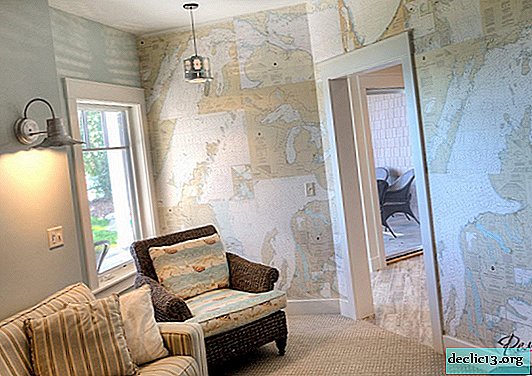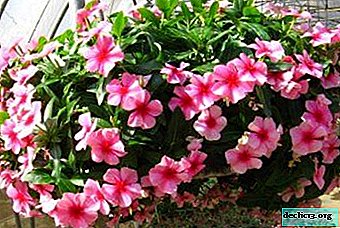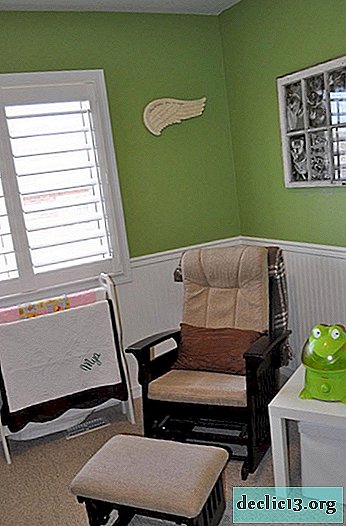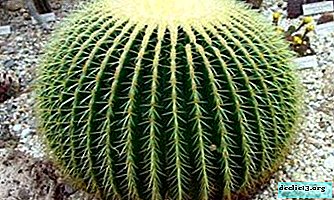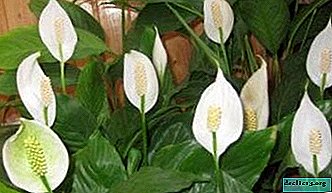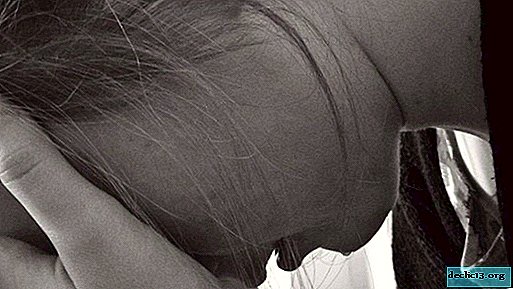How to grow anthurium from cuttings at home? All about the vegetative method of propagation of a flower
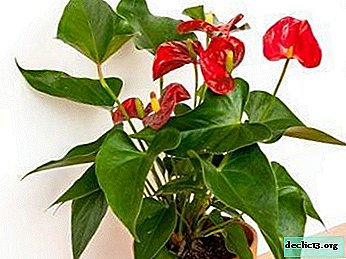
By the beauty of flowering, anthurium can be compared only with some types of orchids, thanks to its bright colors and leaves having bizarre coloring, this tropical miracle firmly won its place in the hearts of flower growers.
Anthurium, also known as male happiness, is a capricious plant that requires proper care, attention and care, and at the same time, it reproduces surprisingly easily. The easiest way to choose one of the vegetative methods of reproduction. In the article we will tell in detail how to grow a flower from a stalk.
Advantages and disadvantages of the method
Vegetative propagation methods have one important advantage compared to seed germination: an adult capable of blooming a plant can be obtained in just a few months. In addition, the care of tiny seedlings requires great attention, otherwise fragile sprouts can die. In the case of rooting the cuttings, everything is much simpler.
When reproducing and performing other manipulations, it should be remembered that anthurium, like most representatives of its species, is a poisonous plant. When anthurium juice gets on the skin, symptoms characteristic of allergic reactions occur: itching, irritation, redness. If accidentally ingested, the juice can cause serious poisoning.
Attention! When carrying out any operations with the plant that can cause damage, it is imperative to use rubber gloves. After completion of work, hands should be washed thoroughly.Photo
Below are photos of the plant.





When is it best to propagate flower male happiness?
It is possible to germinate anthurium cuttings at any time of the yearif you create the right conditions for them. Nevertheless, for most plants, winter is a dormant period, while spring and summer, on the contrary, are characterized by active growth, flowering, and the development of new shoots.
Thus, the ideal moment for rooting anthurium cuttings is from the end of April to June. The shoots planted at this time are more likely to take root and bloom, as they will receive more natural light and heat.
The choice of soil for planting
It is almost impossible to find special soil suitable specifically for anthurium in flower shops. Not ideal, but quite acceptable option may be a substrate for orchids or violets. You can mix the right soil yourself, for this there are two basic recipes:
- 1 part of turf, 3 parts of leaf humus and 1 part of perlite (a small amount of charcoal can be added to the finished mixture);
- in equal proportions: substrate for azaleas or rhododendrons, bark, sphagnum, peat crumb, small expanded clay.
Material and pot size
Experienced flower growers recommend choosing wide and shallow pots, since the root system of Anthurium is superficial and requires air access. A deep and voluminous pot can slow down the growth of the aerial parts of the plant, since the root system will develop in the first place. For the first planting of a young plant, a small container with a diameter of 10-12 cm is suitable.
The material from which the pot is made is not so importantAnthuriums feel comfortable in both plastic and ceramic or clay vessels, the main thing is not to forget about the drainage layer, which should fill up to a quarter of the total volume.
Selection of planting material
For propagation, an shoot on which there are already air roots is ideal, but, if necessary, you can choose a shoot without them. The length of the stalk should be about 12 cm and have at least 2 healthy leaves. In this case, the leaf plates themselves will not participate in the propagation process and after separation of the cuttings they can be removed.
Important! For the cuttings, it is necessary to select only areas with absolutely healthy leaves without traces of damage.Step-by-step instruction: how to root
To root the cuttings it is necessary:
 Cut a shoot about 10-12 cm long with several leaves. Leaves can be removed, or twisted into a tube and tied with a thread to avoid excessive evaporation of moisture.
Cut a shoot about 10-12 cm long with several leaves. Leaves can be removed, or twisted into a tube and tied with a thread to avoid excessive evaporation of moisture.- Leave the cut stalk for several minutes to dry, treat all slices on the mother plant with crushed activated carbon, brilliant green or iodine.
- Fill the prepared small containers with sphagnum or a mixture of sand and peat chips.
- To deepen the cuttings into the substrate by about 5 cm, the growth point of the future plant must always remain on the surface.
- Pour and cover with polyethylene or a glass container to create a greenhouse effect.
- Maintain a temperature of + 21-24 degrees in the greenhouse, spray and ventilate daily, moisten the substrate as necessary.
To speed up the rooting process, you can use root (solution or powder) or similar preparations to accelerate root formation.
The appearance of new leaves or processes in the seedling suggests that the rooting process was successful and the young plant can be transplanted into a permanent pot with a substrate suitable for adult anthuriums.
Aftercare
The rules for caring for young plants are no different from those that apply to adult specimens. It is enough to treat them with utmost care, since a recently transplanted small process, unlike its older brother, may not survive the forgotten watering or a sharp cooling:
- the optimum temperature for anthurium is + 20-24 degrees, if the thermometer mark drops below +15, this can cause irreparable damage to the plant;
- Anthurium should be protected from direct sunlight, while the lighting should be bright and long;
- in the spring-summer period, it is necessary to water the plant 2-3 times a week, but it is important to ensure that the water does not stagnate in the substrate and pan;
- spraying is done several times a day, since anthurium needs high humidity (up to 90%);
- it is best to use natural top dressing, an overabundance of mineral fertilizers should be avoided.
What to do if the plant does not take root?
If the young plant does not take root, it is important to make sure that all the conditions of maintenance are met, the temperature, humidity and regularity of watering are normal. If all the rules of care are followed, but the anthurium still does not want to grow, you can use one of the complex growth stimulants, for example, heteroauxin, or a solution of succinic acid.
Reproduction of anthurium at home does not require special knowledge and skills, the main thing is to be patient and provide the flower with regular care and care.
Useful video
We suggest you watch a video about the cuttings of anthurium:

 Cut a shoot about 10-12 cm long with several leaves. Leaves can be removed, or twisted into a tube and tied with a thread to avoid excessive evaporation of moisture.
Cut a shoot about 10-12 cm long with several leaves. Leaves can be removed, or twisted into a tube and tied with a thread to avoid excessive evaporation of moisture.

